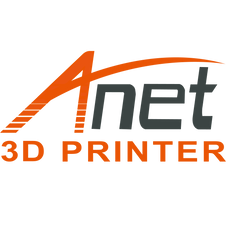Ways to Prevent Filament Moisture from Affecting 3D Printing Result
Environmental moisture affects our life greatly, and it affects 3D printing filament too. If we print with wet filaments affected by humid environment, 3D printing stringing and stripes tend to happen. The best ways to prevent these from happening are drying wet 3D printing filament before printing and storing opened filament spools in good environment or in a drying oven.
Dry 3D printing filament in a microwave oven?
Yes, some people are drying filament in microwave ovens. But the result is not that stable.
Why? That’s because in a microwave, heat is not evenly distributed.
We put a spool of black PLA filament into a microwave, and set appropriate temperature and duration for drying the filament (see in the list at below paragraph).

The PLA filament spool deformed a lot. Thus we don’t recommend to dry 3D printing filament in a microwave oven.
How wet filament affects 3D printing result?
Commonly used 3D printing filament, such as PLA, PETG, PA, TPU and ABS (except some special material like PP), absorbs moisture from the environment. When a spool of filament is opened from its vacuum package, it starts to absorb water. When moisture inside the filament reaches certain level, the filament tends to degrade and carbonize, and form bubbles inside. It results in lower fluidity and glossiness of the filament and affects 3D printing obviously.
To better know how filament moisture affects 3D printing, we performed a test with both wet and dry PLA, PETG and nylon filaments. Let’s take a look at the results.

Wet PLA filament prints temperature tower with a lot of stringing.
We printed temperature towers with two spools if same PLA filament, one kept in place with humidity exceeding 70% for 3 days, and the other dried at 55℃.
The result is quite obvious. Wet PLA filament printed the temperature tower with a lot of filament stringing.

3D printing stripes appear on calibration cube printed with wet nylon filament.

Abnormal texture appeared on calibration cube printed with wet PETG filament.
We also printed calibration cubes with wet and dried nylon and PETG filaments. The results again proved wet filaments affect 3D printing.
Wet nylon filaments printed the calibration cube with obvious stripes on the surface while wet PETG filament printed out stripe textured surfaces.
On the contrary, both dry nylon and PETG filaments print much smoother surfaces.
Guidance for drying different 3D printing filaments
As we see, dry filaments print much better. Then how can we dry 3D printing filaments?
Different filaments require different temperatures and durations to get dried. Let’s check out below list.
|
Filament Material |
Required Temperature |
Dry Duration |
|
PLA |
50℃ |
3 hours |
|
ABS |
65℃ |
3 hours |
|
TPU |
55℃ |
4 hours |
|
Nylon |
70℃ |
12 hours |
|
PETG |
65℃ |
3 hours |
We can dry PLA, ABS, TPU, nylon and PETG filaments according to the above data. Also, excessive drying at high temperatures or for too long results in deformed filaments and poor 3D printing results.
How Long Does 3D Printing Filament Last?
Generally, vacuum packaged 3D printing filaments can last two years or even longer. Opened filaments can be affected by storage method and environment, for example, dusty or wet conditions. Opened filaments can last 3 to 6 months.
To avoid storing excessive amounts of filament, it is advised to measure the amount needed in a certain period before purchasing 3D printing filament. And it is recommended to use opened filament within one or two months.
How to Store 3D Printing Filament?
Since opened filaments are inevitably affected by the environment, how can we store them in good condition?
Always stores filaments at a clean, dry and ventilated place with less exposure to sunshine; in humid areas or seasons, keeps opened 3D printing filaments in a drying oven.

Leave a comment